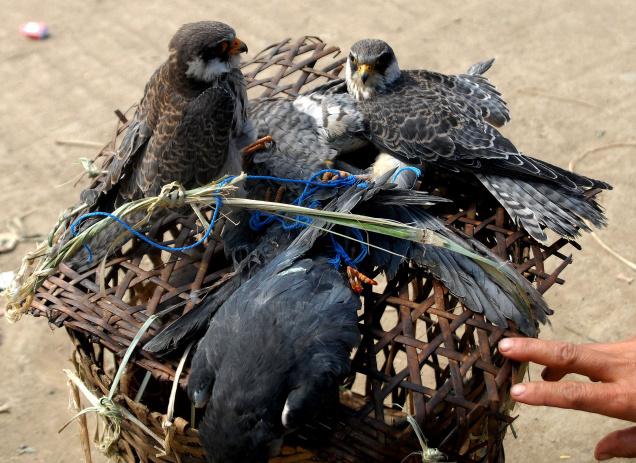Guwahati, November 5: Two scientists from Hungary reached Nagaland on Sunday to satellite-tag Amur Falcons there — the first time that such a project is being undertaken in the country.
The five-day mission, began on Tuesday and ending on Saturday, is taking place in collaboration with scientists from the Wildlife Institute of India Dehradun, the Programme Officer – Birds of Prey (Raptors), the Ministry of Environment and Forests, the Convention on Migratory Species, the United Nations Environment Programme, the Environment Agency-Abu Dhabi, and the Nagaland Forest Department.
Every year, from October to November, a large number of Amur Falcons arrive in the northeast, especially in Nagaland, from South-eastern Siberia and Northern China en route to their final destination — Somalia, Kenya and South Africa.
Amur Falcons travel up to 22,000 km a year — known to be one of the longest distance migration of birds. Principal Chief Conservator of Forests and head of Forest Force Nagaland, M. Lokeswara Rao told The Hindu that the team of scientists will tag five Amur Falcons with satellite transmitters in the Doyang area of Wokha district. “The bird of prey visits Nagaland, probably before taking a giant leap across the Indian Ocean. The raptor spends its day in search of food and settles on trees for roosting during the night. This is the first time in the country that satellite transmitters are being fitted on Amur Falcons,” Mr. Rao said.
He also said there were threats related to conservation of Amur Falcons, particularly during their seasonal migration.
“A comprehensive understanding of the seasonal migration patterns of Amur Falcons is needed for preparing a ‘Conservation Action Plan’ for the species. As they are long-distant migrants, we need to use specialised satellite transmitters which can track their seasonal movements,” he said.
The senior forest official hoped that satellite tagging would bolster conservation efforts initiated by the Nagaland Forest Department as well as NGOs, and prevent hunting of the migratory birds.
As a result of the joint effort of churches, village councils, NGOs, educational institutions and the Forest department in building awareness on the importance of conserving the species, no Amur Falcon has been hunted this year, he said.
Previously, a large number of Amur Falcons were captured and killed in the State.

